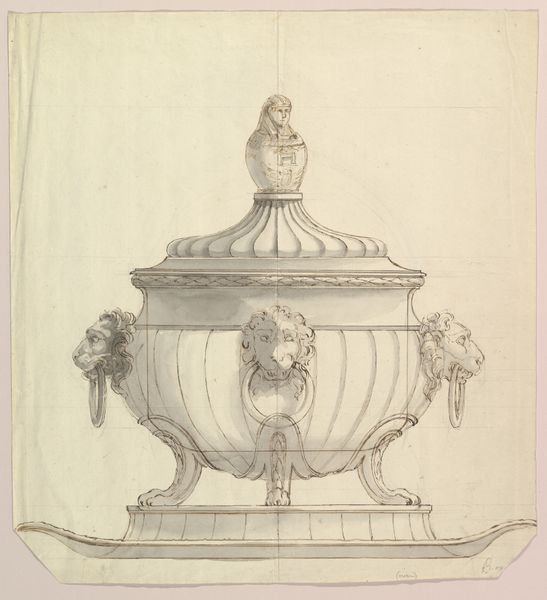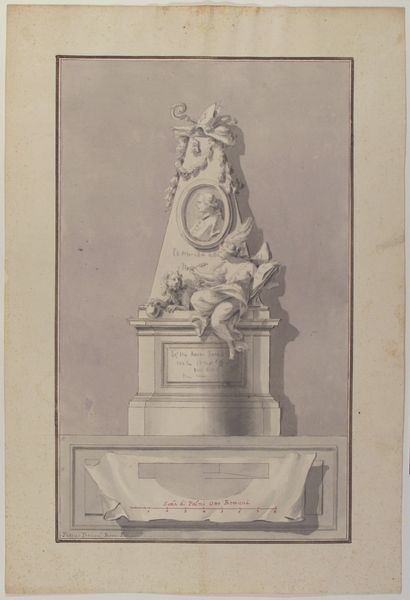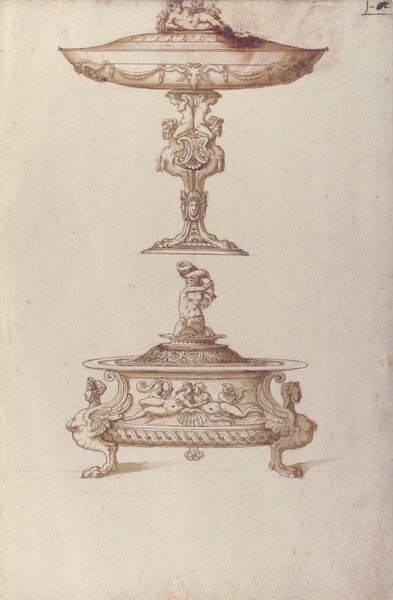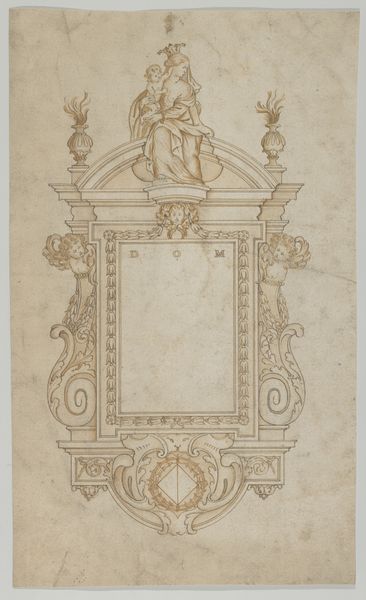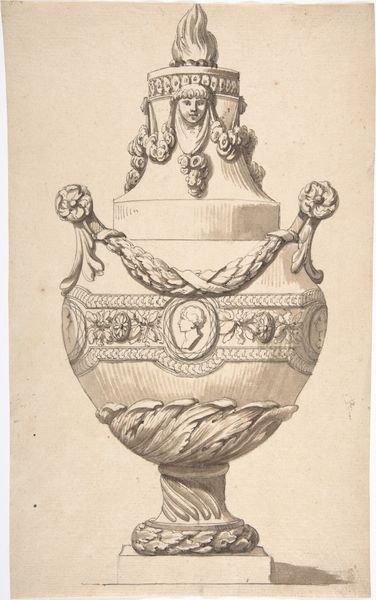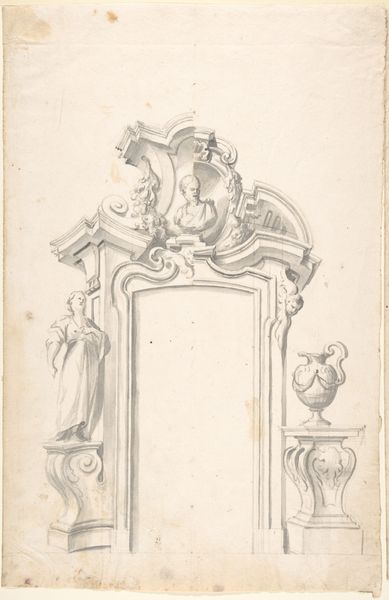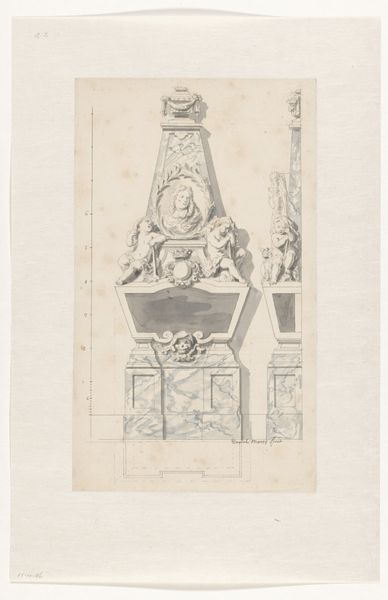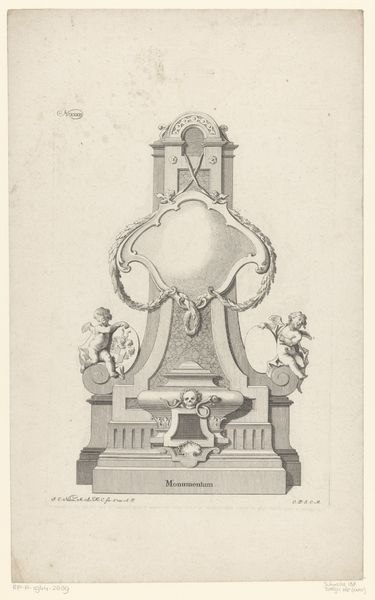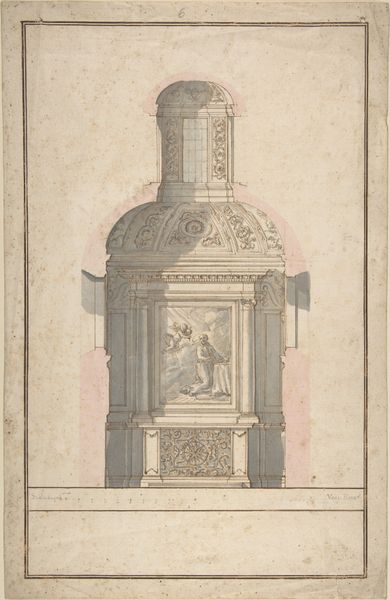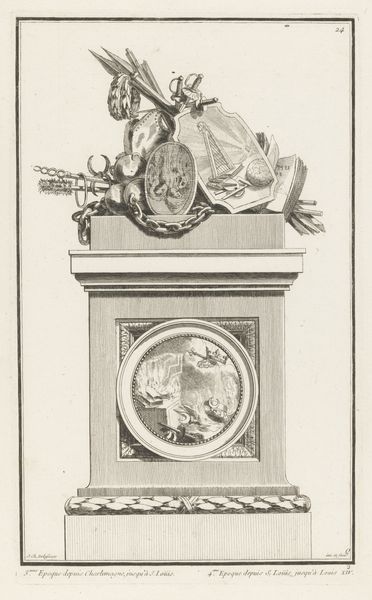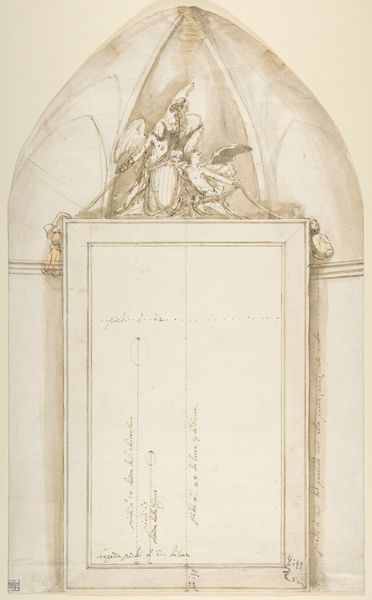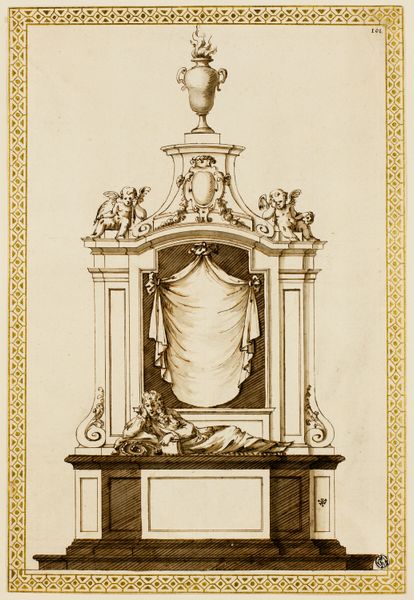
drawing, print, watercolor
#
drawing
#
water colours
#
baroque
# print
#
watercolor
#
history-painting
#
academic-art
Dimensions: 15 5/8 x 10 9/16in. (39.7 x 26.8cm)
Copyright: Public Domain
Editor: This drawing, "Design for a Tomb" by Pietro Bracci, was created sometime between 1700 and 1773. It seems to be rendered primarily in watercolor. The tomb is ornamented with angelic figures. What strikes me is the stoic portrait above them and the overall air of formal grief. How do you interpret this work? Curator: This Baroque drawing offers insight into the social and cultural narratives surrounding death and commemoration during that period. Death wasn't just a biological event; it was a performance, particularly for the elite. Editor: A performance? Could you expand on that? Curator: Absolutely. Consider the tomb itself as a stage. The angelic figures and portrait are not simply decorative; they perform grief and project a specific image of the deceased. The use of watercolor adds to this effect, softening the hard edges of mortality, creating a palatable image for the public. It also points to issues of class. Who was this tomb *for*? What social class did this design target and how did that reinforce existing social stratifications? Editor: I hadn't thought about it that way – it’s like crafting a public image of the deceased, controlling their narrative even in death. Curator: Exactly. And we must question the role of the artist within this system. Were they merely a craftsman, or were they complicit in perpetuating social and political ideologies through their art? What is Bracci saying here? Editor: Seeing it now, it’s much more than a somber design. It's a carefully constructed piece meant to immortalize someone's memory while reinforcing societal hierarchies. Thanks for unveiling a new angle. Curator: And you, for prompting the critical questions. Let's continue to examine how art can reinforce or challenge dominant ideologies.
Comments
No comments
Be the first to comment and join the conversation on the ultimate creative platform.

